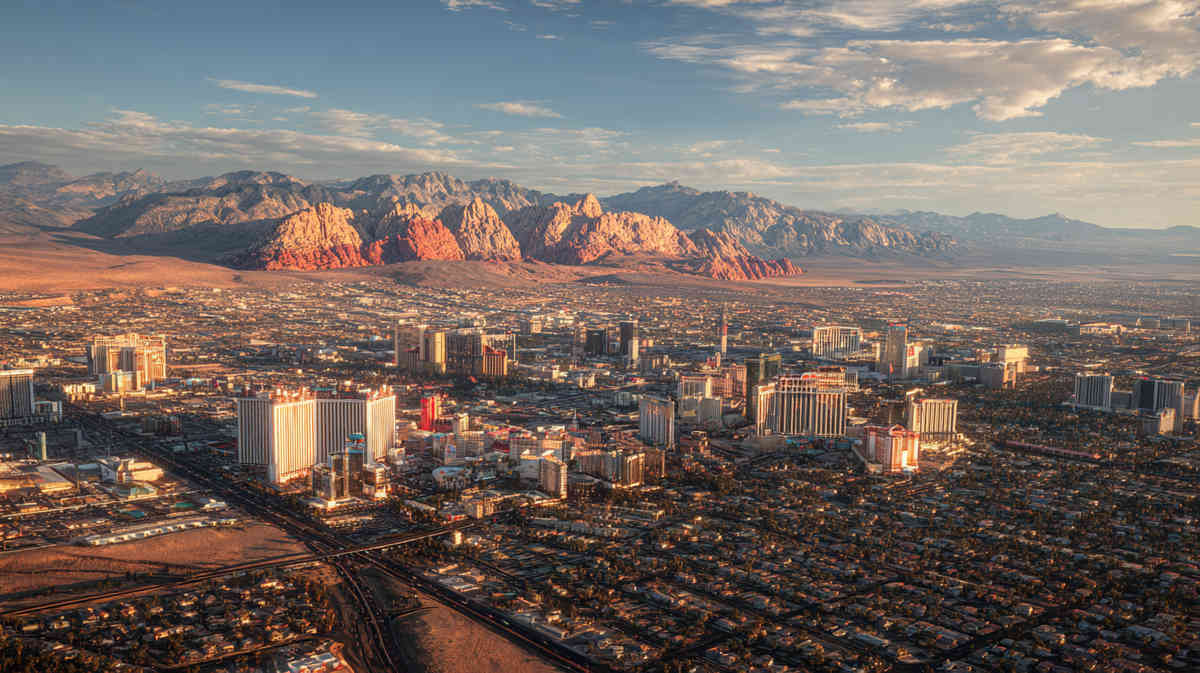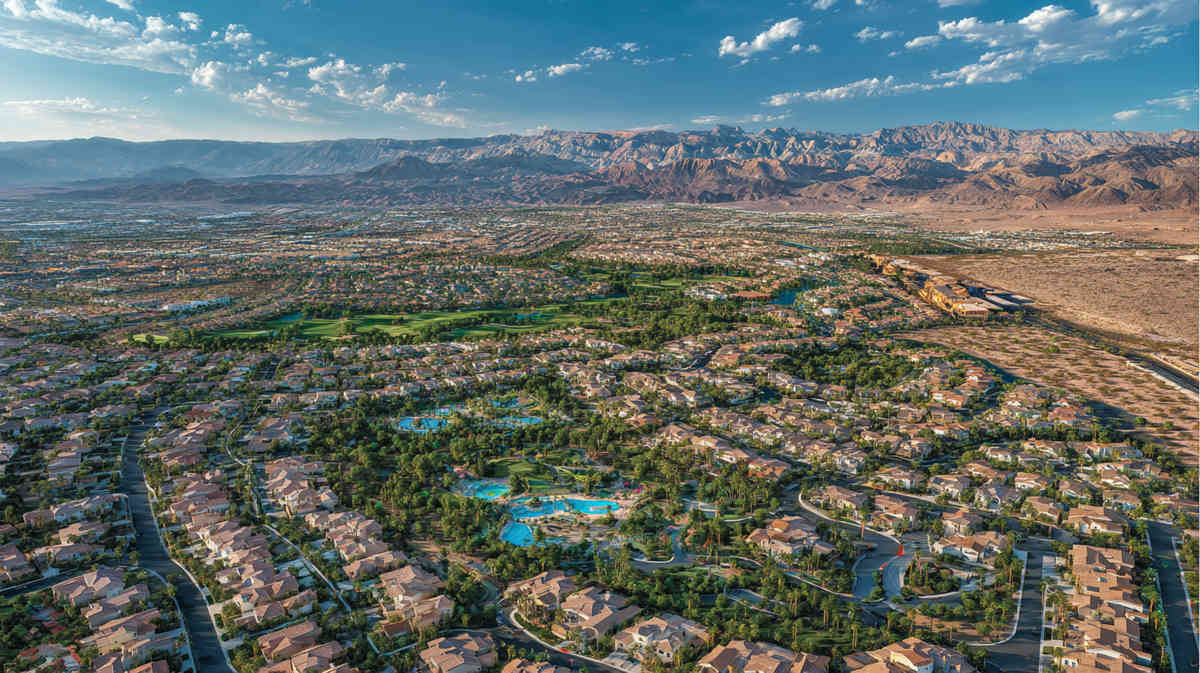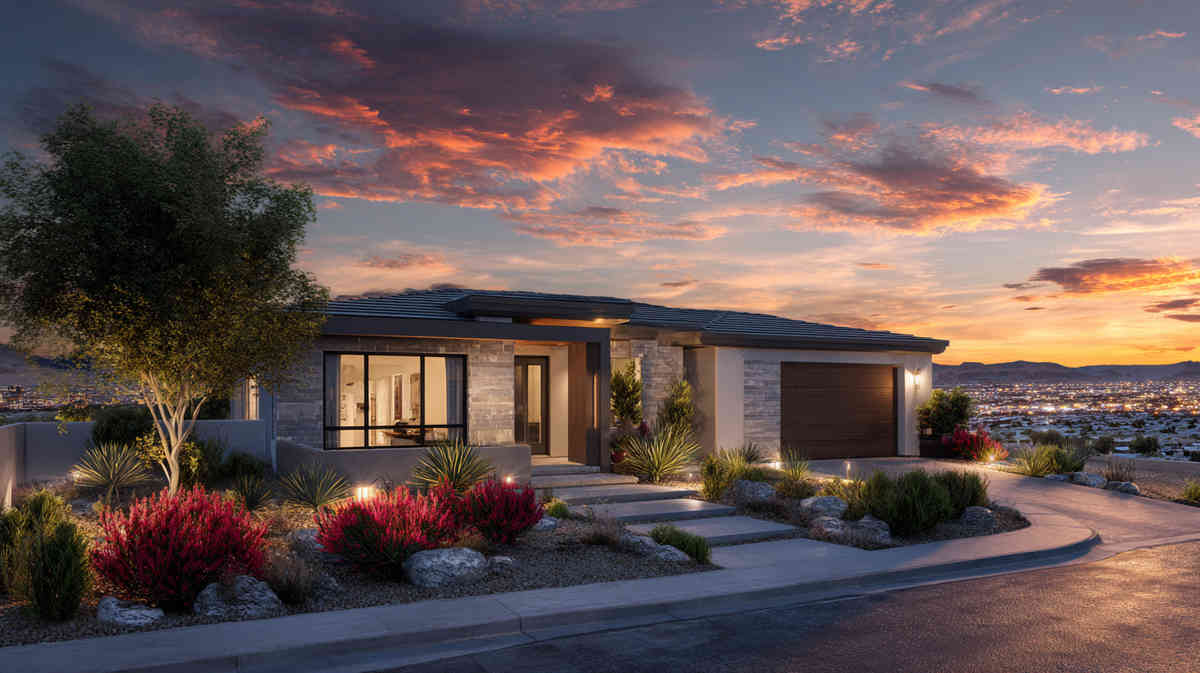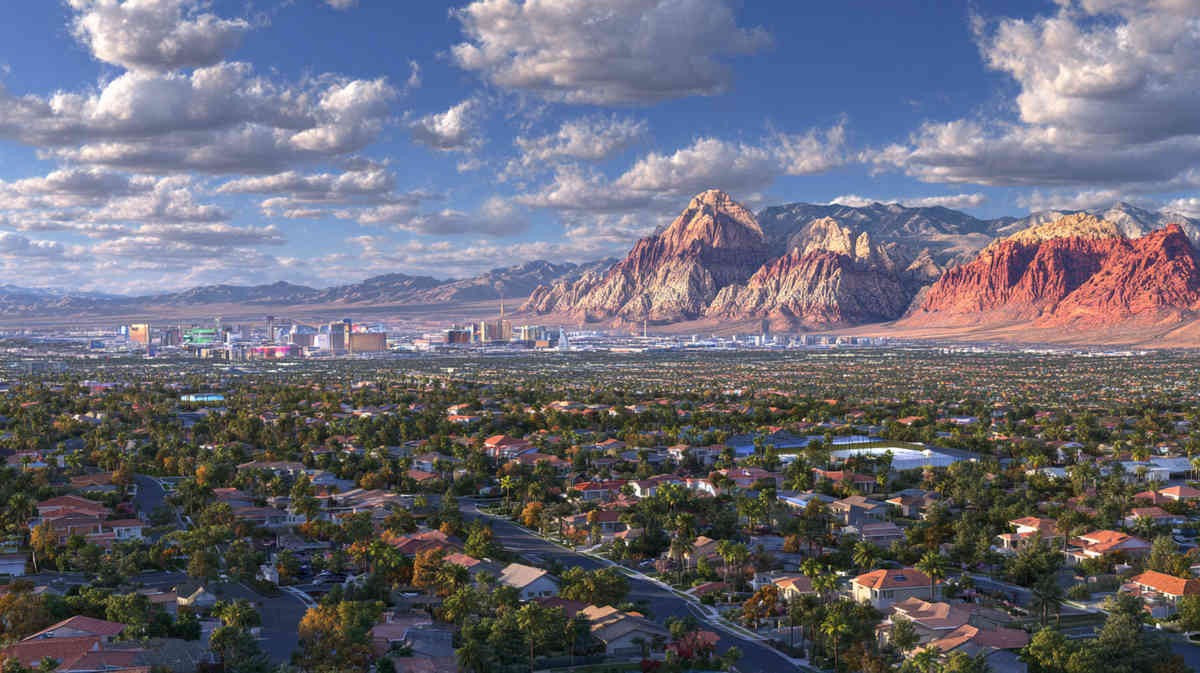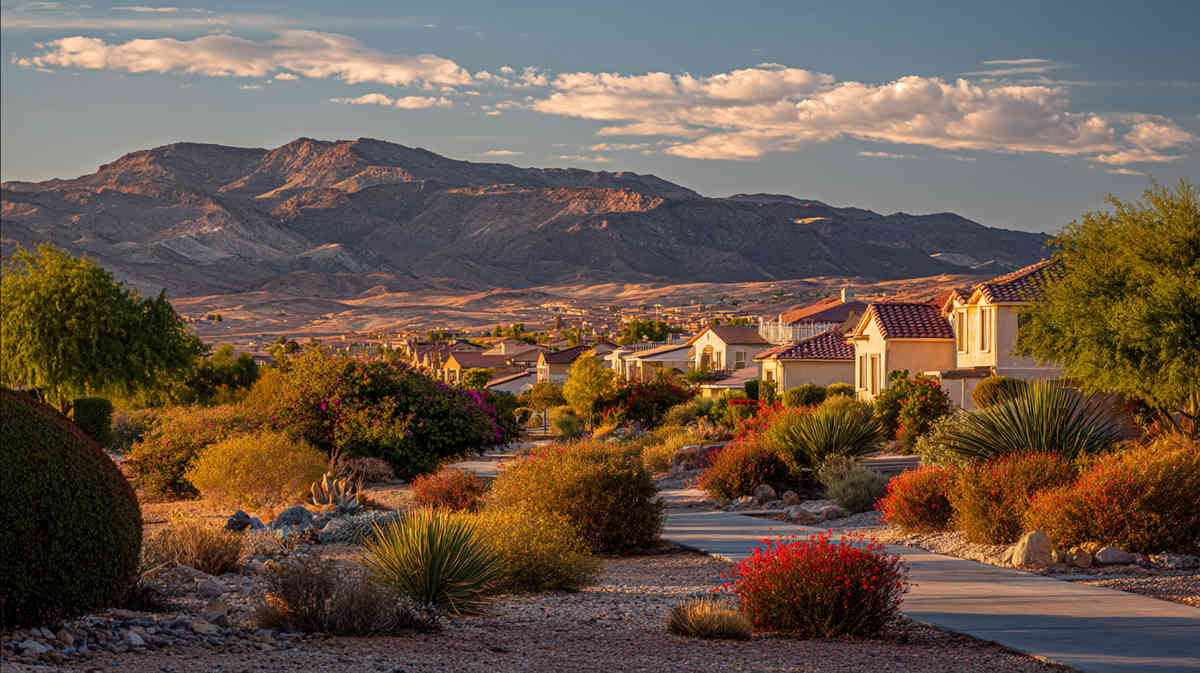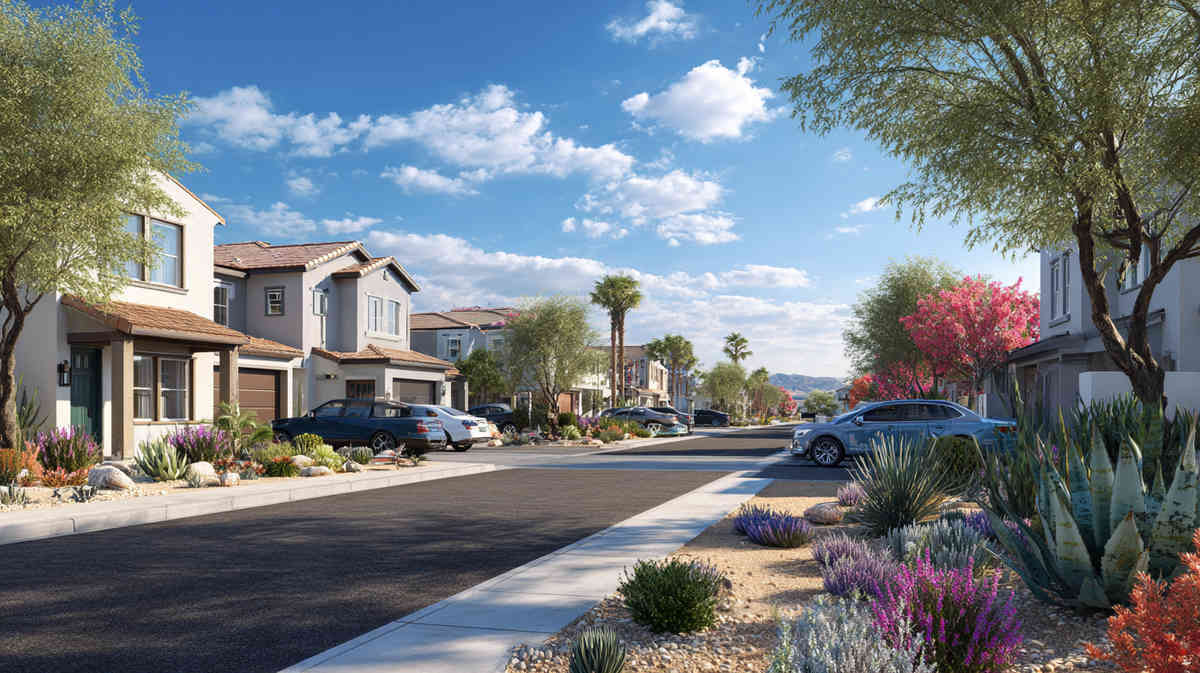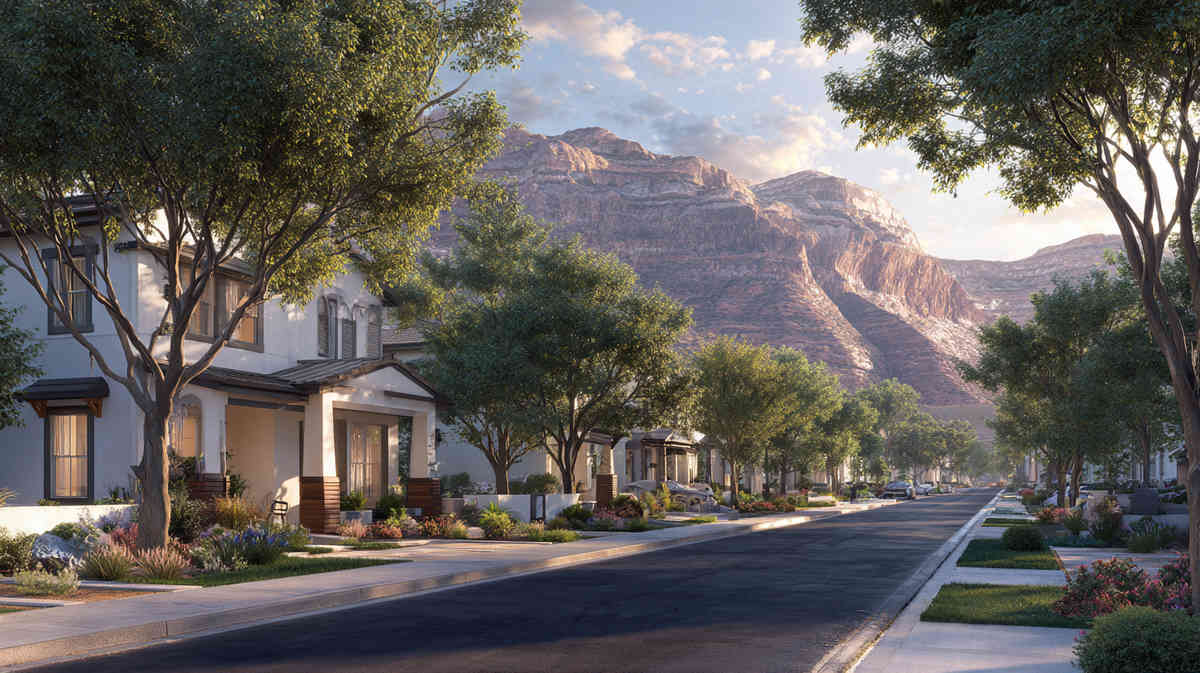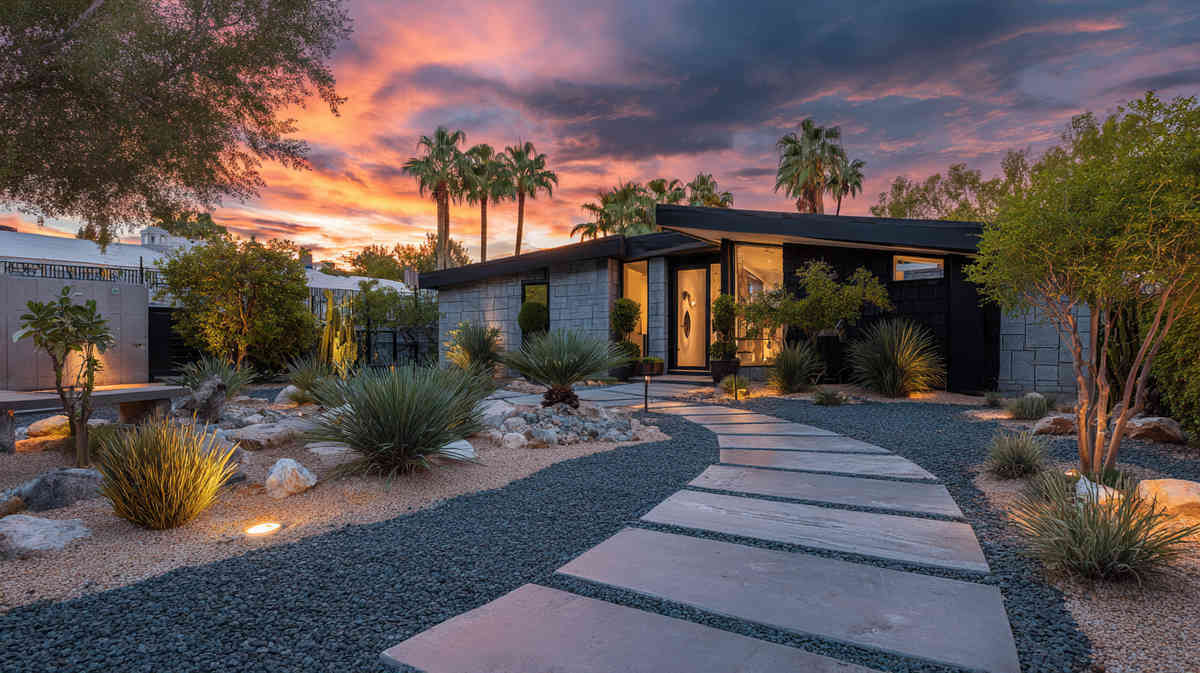No glitter, no smoke machines. Just straight talk about what you’ll shell out every month if you plant your flag on the north side of the valley. Ready? Let’s peel back the curtain.
North Las Vegas: The Strangely Overlooked Neighbor
Locals joke that North Las Vegas hides in plain sight. Roughly 280,000 people call it home today, a head-count that has doubled since the early 2000s and is still creeping upward. Why the quiet growth? Three reasons keep popping up when I chat with recent arrivals:
- Strip-adjacent convenience without Strip price tags
- Industrial and logistics jobs that pay better than the regional average
- More elbow room than you’d expect inside a major metro
Developers once treated the area like spare change in the sofa. Not anymore. Warehouses, small tech firms, and light-manufacturing plants have piled in over the last decade, nudging wages higher. Translation: people can live closer to work, skip Interstate 15 gridlock, and keep rent from torching their paycheck. Enough said.
Housing and Utilities: What Your Wallet Feels First
The 2025 Home-Purchase Reality
Median resale price in January 2025: about $385,000. That’s 14 percent below the broader Las Vegas valley. In four pockets—Aliante, Eldorado, Valley Vista, and the fast-morphing Speedway corridor—new-builds still sneak in under $425k. The big riser this year is Valley Vista, logging a 9 percent jump since last summer thanks to fresh parks and a brand-new charter school. You’ll want to lock in sooner rather than later if that’s on your radar.
Not chasing a single-family? Condo price tags hover near $250k, with HOA fees in the $180 to $220 a month range. Pro tip: ask how often those HOAs adjust reserves for roof replacements because Vegas sun is unforgiving.
Renting Without Regret
Average advertised rent on a clean two-bed sits at $1,575 a month as of April. Here’s the quick snapshot I hand clients:
- Northwest Las Vegas apartments at $1,612 on average
- Centennial Hills creeps slightly higher at $1,624
- Older four-plex units east of Civic Center can still slip under $1,250, though you’ll trade fresh paint for that discount
Ask leasing offices about “asset protection fees.” They look tiny on paper, but add $13 to $25 each month and rarely appear in the first ad you see online.
Utility Bills Nobody Mentions Up Front
Power: NV Energy’s tiered rates shove summer bills skyward. A 1,800-square-foot home with standard insulation:
- March: $115
- July: $285
- November: $98
Water: $33 base fee covers the meter before a single gallon flows. A family using 9,000 gallons in August will see $72 on the ledger. Shave that down with desert landscaping credits. Yes, the city still issues them.
Trash and sewer arrive as a combo bill—about $58 every other month. Miss the due date and the city tacks on $5.17 immediately. That odd nickel and dime amount trips a lot of newcomers.
Internet: Cox reigns here. The unadvertised “StraightUp Internet” plan costs $50, taxes included, no contract. Few people outside Nevada know it exists, yet it beats the national Comcast average by roughly twenty bucks.
Adding it all, a three-bed household lands between $400 and $500 a month for utilities in peak summer. Single professionals in a one-bed unit normally slide in below $250.
Taxes: The Bill That Doesn’t Feel Like a Bill—Until It Does
Nevada still laughs at state income tax. Zero. Done. Keep every dime of your paycheck. That single line lures more California expats than any marketing slogan ever could.
Property tax, however, isn’t a flat figure. Clark County calculates it through an assessed value formula that usually equals roughly 0.6 percent of market price. So a $400,000 home runs about $2,400 per year. Ask your lender to project next year’s jump—the cap sits at 3 percent for owner-occupied homes, 8 percent for rentals. Investors sometimes miss that second figure and get blindsided.
Sales tax totals 8.38 percent in North Las Vegas. It feels heavy when you buy furniture at Downtown Summerlin, lighter when you remember you skipped state income tax entirely. A fresh bill in 2023 also redirected a tenth of a percent to fund more police officers on the city’s northeast side, a detail you won’t see on most cost-of-living sites.
Vehicle registration follows a sliding scale based on MSRP and model year. A three-year-old crossover at a $26k original sticker will owe about $380 annually. The figure drops each year, but not as quickly as newcomers expect. Set an automatic reminder; Nevada mails renewals only once and charges a $10 late fee no questions asked.
Food and Fun: Numbers From Grocery Aisles to Karaoke Lounges
Filling the Fridge Without Emptying the Account
Smith’s and Albertsons dominate, yet many residents split trips: basic staples at WinCo, specialty produce at the Wednesday farmers market off Craig Road. Average monthly grocery spend according to my own budgeting templates:
- Single adult cooking five nights a week: $330
- Two-adult household: $520
- Family of four with teenagers who inhale cereal like air: $965
Stack those figures against Phoenix or Salt Lake City and you’re within five percent. Against San Diego, you’re saving around thirty.
What you won’t read on coupon blogs: the military commissary at Nellis Air Force Base opens to anyone with a civilian employee card, not just active duty. Friends in logistics jobs use it for meat prices that undercut Costco by a third.
Entertainment Costs—Because Nobody Works 24-7
Grab a craft beer flight at North 5th Brewing: $12. Movie tickets at Galaxy Cannery: $13 for evening shows, $8 on Tuesdays. Rock-climbing day pass at the brand-new Origin Climbing gym: $21 including gear.
Strip shows draw tourists south, yet locals get splashy discounts through Station Casinos’ Boarding Pass program. Line dancing at Santa Fe Station runs $10 including a lesson. Compare that with $45 cover charges around Allegiant Stadium, and you see why residents brag about “locals’ perks.”
Rare detail: North Las Vegas DMV issues line-skipping kiosks inside Texas Station. Pair your license renewal with quarter roulette and call it multitasking.
Moving Around: Gas, Buses, and Other Secrets of Motion
Gasoline hovered at $4.17 a gallon last week—twenty cents below the California border but twenty above the national median. Expect a nickel swing either direction all summer as refinery maintenance wraps up. E-85 blends show up at the Speedway Boulevard Maverik station, saving flex-fuel drivers about eighty cents.
RTC buses charge $2 a ride or $65 for an unlimited monthly pass. They run earlier than you’d guess: first departure at 4:30 a.m. on the popular 113 route. Commuters heading to distribution centers love that.
Ride-share fares from Aliante to Downtown Las Vegas average $24 in low-traffic hours, spiking to $42 during Raiders home games. I recommend clients grab the Lyft “Las Vegas Pass” when football season kicks up; $69 covers twelve rides under $18 each and resets monthly.
Electric vehicle owners: two free Level-2 chargers outside City Hall, four more at Craig Ranch Regional Park. First-come first-serve, no idle fees. That tidbit rarely makes mainstream blogs but saves Tesla drivers meaningful cash.
So, Is the Math Worth the Move?
Add it up. Mortgage on a median home: roughly $2,450 with 10 percent down at current rates. Toss in utilities, groceries, transportation, and a reasonable entertainment line item. Total monthly outlay for a couple lands near $4,200. Solo renters often float at $2,600. For a major metro anchored by global entertainment, those numbers punch well below cities of similar size.
North Las Vegas isn’t a postcard suburb, yet the subtle combo of lower housing prices, no income tax, and quiet local discounts keeps bank accounts healthier than people expect. If your relocation checklist spotlights value over glitz, this zip code deserves a long second look.
FAQ Corner: Quick Answers Before You Pack
1. What neighborhoods give the most bang for the buck?
Eldorado and Villages at Tule Springs still show single-story homes under $400k and HOA dues below $60. Bargain hunters also sniff around North Ranch, where build-out continues and builders offer mortgage rate buydowns.
2. How does the cost of living here stack up against Reno or Henderson?
Housing runs 10 to 18 percent cheaper than Henderson and roughly 22 percent cheaper than Reno. Utilities and groceries remain almost identical statewide. The real win is in property tax caps that skim two percent lower than Washoe County.
3. Any money perks unique to North Las Vegas?
Yes. The city waves business-license fees for the first year on home-based startups. Solar panels qualify for an extra $500 local rebate on top of state incentives. Also, certain census tracts north of Lake Mead Boulevard still sit in an Opportunity Zone, unlocking capital-gains deferrals for investors.
4. Hidden costs that trip up newcomers?
Summer power bills often shock first-timers. Budget for near-triple winter usage. Also, some HOAs fine residents for brown spots on grass even though desert landscaping is encouraged—make sure the HOA bylaws match your yard plans.
5. Do seasons mess with expenses?
Absolutely. July electricity climbs, yet winter gas for heating barely nudges past $35. Water rates shift via conservation tiers; heavy summer irrigation costs extra. Car insurance dips a hair in winter once tourist traffic calms, then spikes before New Year’s Eve.
Ready to crunch your own numbers? Pull last month’s paystub, line it up against these figures, and see what your future could look like. North Las Vegas won’t wine and dine you with neon flair, but it just might keep more money in your back pocket.



